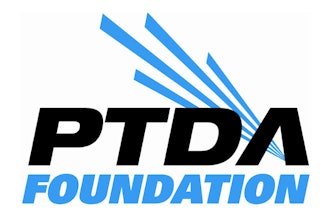
The number one financial concern for employees who have children under the age of 18 is how to pay for rising college costs. 529 plans, tax-advantaged college savings vehicles offered by the states, are a great way for parents to save for college, but 69 percent of parents do not know about 529 plans. Let’s look at key information for employers, and employees, interested in offering/participating in 529 plan benefits.
What are 529 Plans?
A 529 plan is set up by a state or educational institution, and offers tax advantages and other benefits to make it easier to save for post secondary education. It operates similarly to a Roth IRA in which contributions are made with post tax dollars. Earnings within the account accrue tax-deferred and are eventually tax-free when used for qualified higher education expenses. These include tuition, fees, room & board (both on and off campus), computers, and anything else deemed necessary for attendance.
And remember, the post secondary institution does not have to be college. 529 plan funds can also be used for things such as extension learning, trade/vocational schools, or continuing education courses.
When can parents start saving for their child’s college education?
On average, most people who open 529 plans when their child is seven years old. However, parents can start saving through a 529 plan before their child is even born. The best thing for someone with a newborn is to not delay. If employees put off starting a 529 plan, they may blink and lose five years of contributions and compounding interest. The best thing for parents to do is to just get started. Accounts can be opened with as little as $25.
Why should employers offer 529 plan benefits to their employees?
Companies understand that the financial well being of their employees is paramount. Currently, 84% of employers utilize financial wellness programs, which makes sense as studies show the ROI of such programs is $3 for every $1 dollar invested.
But these programs have a huge gap. As stated earlier, saving for college is parental employees’ #1 concern, yet only 11% of employers are helping by including 529 plans in their benefit packages. The reason being is that many employers feel that only a small portion of their employees would utilize such a benefit. But that’s not the case. Research shows nearly every demographic would participate in a benefit like this.
Seventy-one percent of millennial parents are actively saving for their children’s higher education. 90% of Gen-X parents feel a college education is a must for their kids. And 72% of baby boomers believe it’s important to help save for their grandchildren’s education. It’s no wonder a Savingforcollege.com survey found that 70% of parents would participate in a 529 plan if their employer offered one.
Seeing that 11 percent number above increase would do a great deal in supporting the financial wellness of employees while at the same time helping quell the student debt problem in this country.
How can employers encourage employees to utilize 529 plan benefits?
Once an employer agrees to offer 529s to their employees, the single best way they can help is by offering a match on contributions. Even an amount as little as matching the first $25 an employee puts into an account can be enough to encourage an employee to get started. Additionally, whether an employer offers a match or not, they must be committed to providing education. As stated earlier, many parents can’t even identify what a 529 plan is so it’s important to teach them what they are, what the benefits are and how to get started.
By doing do, not only do employers take interest in an issue their employees care deeply about, but it also helps take a bite out of future student debt. Students whose parents set up college savings plans borrow half as much as those without a plan. They can even help get more people to college. In fact, according to the Center for Social Development, “Children with $1 to $499 in a dedicated college savings account are 2.5 times more likely to enroll in and graduate from college than children with no account.”
 Marcos Cordero, CEO of Gradvisor
Marcos Cordero, CEO of GradvisorMarcos Cordero is CEO of Gradvisor, which combines state-of-the-art technology and personalized, professional guidance to help employees select, open and track the best college savings plan for their needs. Cordero has been a leader in the college savings industry for 4 years, as the CEO of Savingforcollege.com, the leading 529 information site for consumers and professionals. Previously, Cordero had a successful career in the Strategy and Operations Group at Deloitte Consulting. He holds a BS in mechanical engineering from MIT and an MBA from Harvard Business School.























